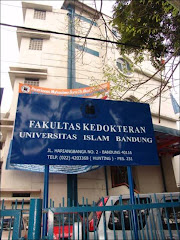Analysis Shows Drugs After Heart Attack Are Effective and Reduce Costs
By Salynn Boyles
WebMD Health News
Reviewed By Elizabeth Klodas, MD, FACC
Feb. 18, 2009 -- Opening blocked arteries with balloon angioplasty and stents can save lives during a heart attack, but the invasive treatment offers little added value over heart drugs alone in patients first treated days and even weeks later.
Now a new analysis shows that avoiding stenting in stable late-presenting patients could result in a yearly savings of around $700 million in health care costs.
"What we have here is one of those cases where less is more," says researcher Daniel B. Mark, MD, MPH, of Duke University Medical Center.
Stents Most Useful Early
Clearing blocked arteries in the early stages of a heart attack can restore blood flow before heart muscle is permanently damaged.
But as many as a third of the roughly 1 million Americans who have heart attacks each year are treated more than 12 hours after their first symptoms appear, when heart damage is likely to have already occurred, Mark tells WebMD.
Clot-busting drugs are not an option when treatment is delayed, but bare metal or drug-coated metal stents were often implanted to prop open and clear blocked arteries in late-presenting patients, even when they had no angina (chest pain) or other physical symptoms.
In the Occlude d Artery Trial (OAT), a major, federally funded study published two years ago, Mark and colleagues reported that late-presenting heart attack patients with blocked arteries had no better long-term outcomes when they were treated with balloon angioplasty and stents than when treated with drugs alone. These results led to major changes in the management of such patients by many cardiologists.
d Artery Trial (OAT), a major, federally funded study published two years ago, Mark and colleagues reported that late-presenting heart attack patients with blocked arteries had no better long-term outcomes when they were treated with balloon angioplasty and stents than when treated with drugs alone. These results led to major changes in the management of such patients by many cardiologists.
All of the patients enrolled in OAT were clinically stable with no chest pain, and all received appropriate medical treatment with drugs like aspirin, beta-blockers, ACE inhibitors, and statins.
Quality of Life and Treatment Costs
In a new report, published in the Feb. 19 issue of the New England Journal of Medicine, Mark and colleagues further analyzed the OAT data.
They examined quality-of-life measurements and treatment costs among the two treatment groups.
Quality of life was determined through standardized questionnaires administered either face-to-face or by telephone at enrollment and at 4, 12, and 24 months.
Four months after enrollment, the stent patients did report less chest pain and scored higher on quality-of-life assessments. But the differences were small and they had disappeared altogether within a year, Mark says.
"We saw no discernable differences in what patients said they were able to do or in any other major measure of quality of life and well-being," he says.
The average cost of hospital and physician care during the first 30 days of treatment was calculated to be $22,859 per patient treated with balloon angioplasty and stenting vs. $12,683 for the medical therapy group.
Over two years of treatment, medical costs among patients treated with angioplasty and stents were an average of $7,000 higher than patients who did not get angioplasty and stents.
It should be emphasized again that the patients enrolled in the OAT trial were all stable and without symptoms. Balloon angioplasty and stenting "does not appear beneficial for this highly selected group ... but that doesn't mean that patients who are very impaired or have poor quality of life and angina will not benefit," study researcher Judith S. Hochman, MD, of New York University School of Medicine, tells WebMD.
National Heart Lung and Blood Institute senior cardiologist George Sopko, MD, tells WebMD that the OAT trial highlights the importance of seeking treatment early when heart attack symptoms occur.
"When someone is having a heart attack, time is of the essence," he says. "We know that if we can reopen blocked arteries and provide adequate blood flow within the first hour or so the patient will usually have minimal damage."
SOURCES: Mark, D.B. New England Journal of Medicine, Feb. 19, 2009; manuscript received ahead of print. Daniel B. Mark, MD, MPH, director, Outcomes Research Group, Duke University Medical Center, Durham, N.C. Judith S. Hochman, MD, New York University School of Medicine. George Sopko, MD, MPH, senior cardiologist, National Heart Lung and Blood Institute.
©2009 WebMD, LLC. All Rights Reserved.


Tidak ada komentar:
Posting Komentar